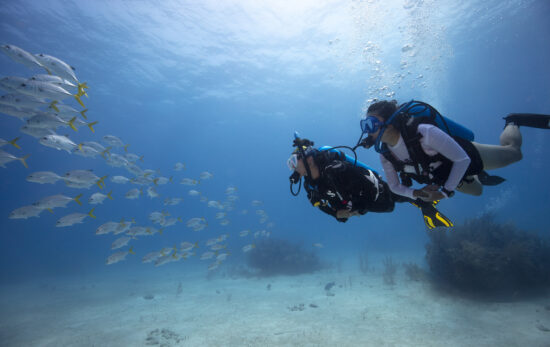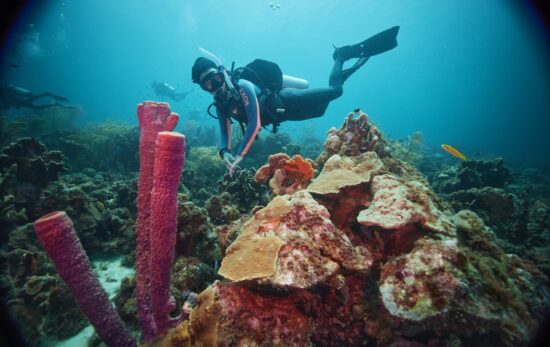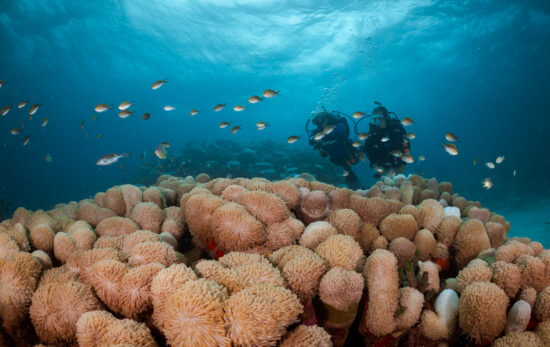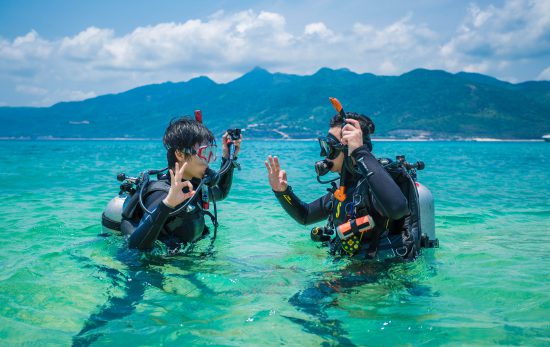So your PADI Open Water Diver course is well underway, and it’s almost time to head out to complete the open water component. But, you may be wondering, what does that entail? What are the four PADI Open Water dives?
We’re going to look at what you can expect from each dive, along with the skills you’ll need to perform to ensure you’re fully prepared for your first foray into open water diving.
Before we get to the breakdown of each dive, here’s a quick reminder of the components of the PADI Open Water Diver course, which culminate in the four open water dives:
- Water Skills Assessment (aka the 200-meter swim & 10-minute float)
- Knowledge Development (commonly done online as PADI e-Learning)
- Confined Water Skills Practice
- Open Water Skills Practice (4 dives)
Once you have proven your water skills, worked through the knowledge development, and mastered your dive skills in the confined water, the final step is to head out to open water to put everything you’ve learned into action.
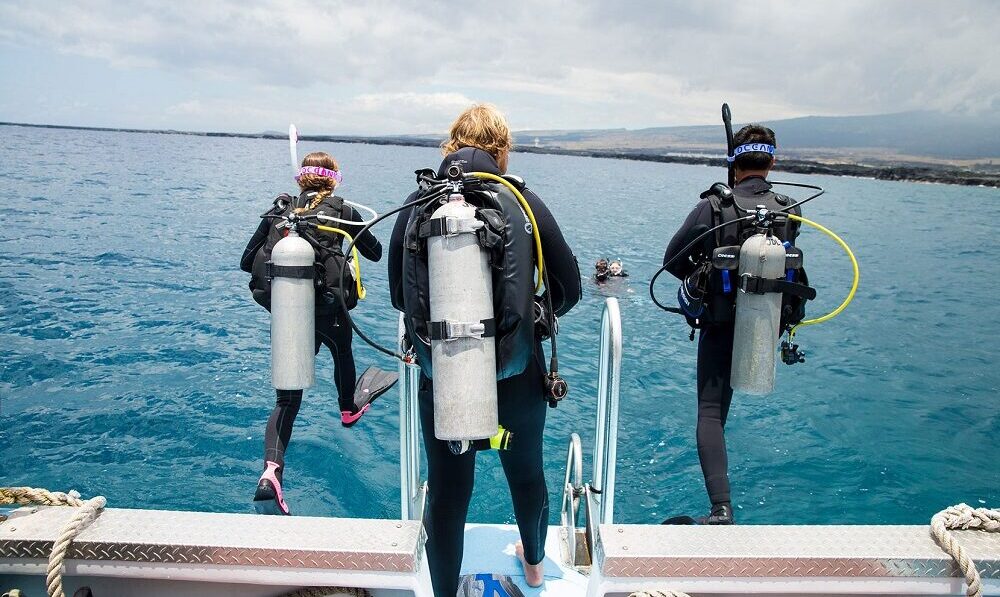
Open Water Practice
When we think of open water dives, we typically imagine diving in the ocean, but this doesn’t have to be the case. You can also conduct open water dives in quarries, lakes, or other natural bodies of water. You can even do them in very large aquariums or man-made pools, as long as they have conditions suitable for practicing the course skills. For example, you need the appropriate depth and bottom contour and composition that allows you to explore, plan a dive, and have a similar dive experience as you would in a natural body of water.
The PADI Open Water Diver course includes four open water dives which usually take place over at least two days. Each dive has been designed to give divers the opportunity to practice and hone their diving skills while increasing confidence and comfort in the water.
Each dive includes a number of instructor-assessed skills. Some skills you will need to complete on a certain, specific dive. Others, the “dive-flexible skills,” you can perform at any convenient time when you’re in or under the water.
Dive-Flexible Skills
During the four open water dives, you will be required to perform certain dive skills which will be assessed by your instructor.
Your instructor will assess these dive-flexible skills at the water’s surface. You can perform them during dives 1, 2, 3, or 4, depending on the logistics of the course:
- Cramp Removal Techniques on a Buddy and Yourself
- Tired Diver Tow (25 meters/yards)
- Straight Line Compass Swim (50 meters/yards)
- Snorkel/Regulator Exchange
- Remove and Replace Gear (Scuba Unit and Weight System)
- Inflatable Signal Tube Use (Can be done on the surface or, when you use a Delayed Surface Marker Buoy (DSMB), underwater.)
- Emergency Weight Drop (If not already done on one of your confined water sessions)
These dive-flexible skills are assessed underwater and can be performed during dives 2, 3 or 4:
- Compass Navigation – Straight-Line Swim (Out and Back)
- Controlled Emergency Swimming Ascent (CESA)
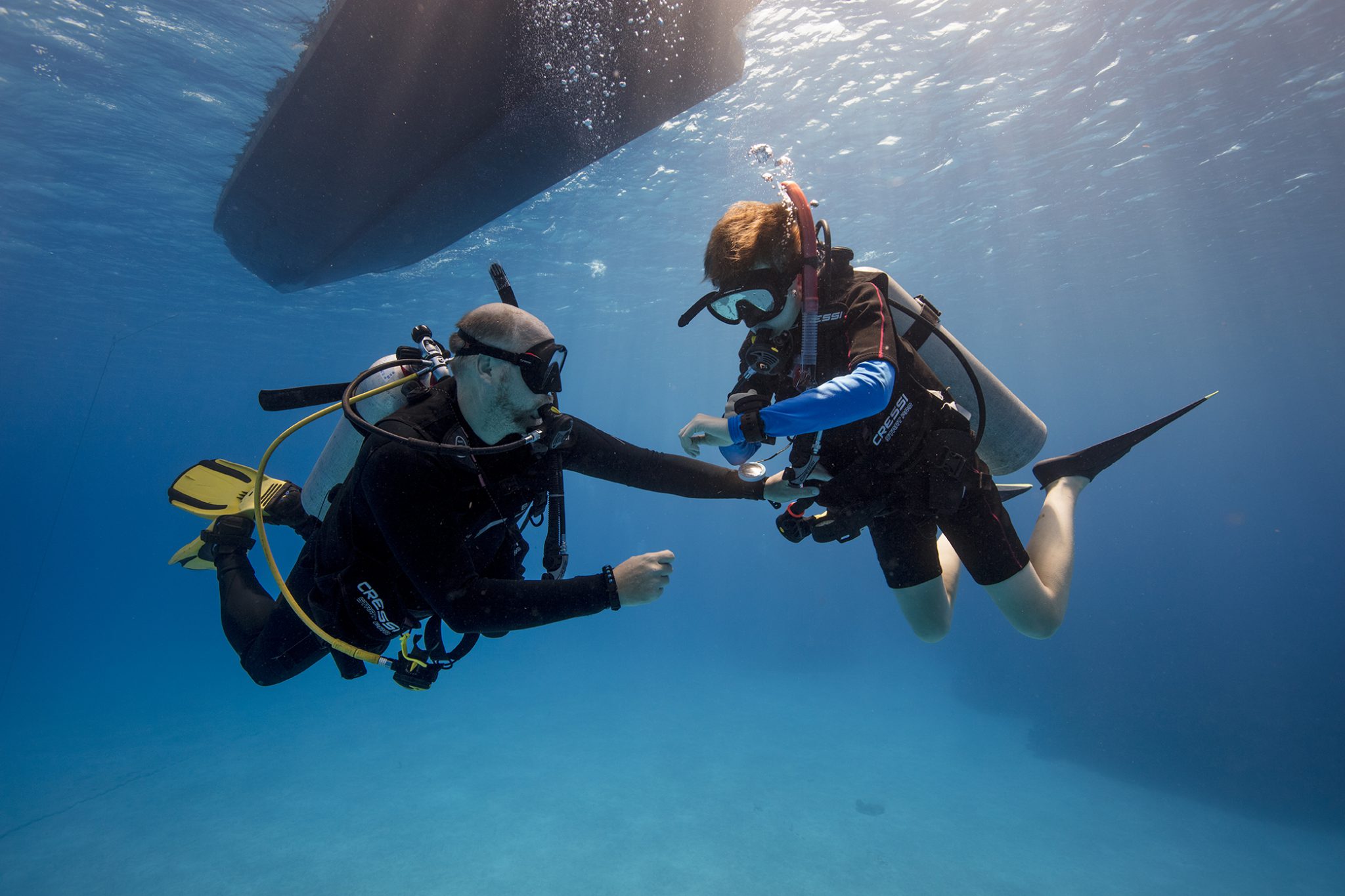
PADI Open Water Dives 1 and 2
This dive is the first time that divers are entering the open water during their PADI Open Water course, and for many, it will be the first time they’ve ever worn their scuba gear in open water at all, unless they’ve previously taken part in a Discover Scuba Diving experience.
That’s why this dive is kept simple intentionally. Before entering the water, divers will:
- Review hand signals
- Put on the scuba equipment
- Perform a pre-dive safety check, using the acronym BWRAF to check on your BCD, Weights, Releases, Air, and Final check (remember Beans With Rice And Fish, Burger With Relish And Fries, or anything else that helps you memorize it!)
- Adjust weight (if necessary)
- Enter the water using a giant stride, a backroll, or whatever is the best option for your diving conditions
These steps will be present on all 4 open water dives.
Once in the water, you will perform a controlled descent, either using a descent line or by following a sloping bottom contour. After descending to a maximum of 12 meters/40 feet, you will complete a trim check, clear a partially flooded mask, and recover and clear your regulator as the underwater skills. When you’ve completed your skills, you’ll get a chance to explore the dive site with the instructor and get more comfortable being underwater before ascending and finishing the dive.
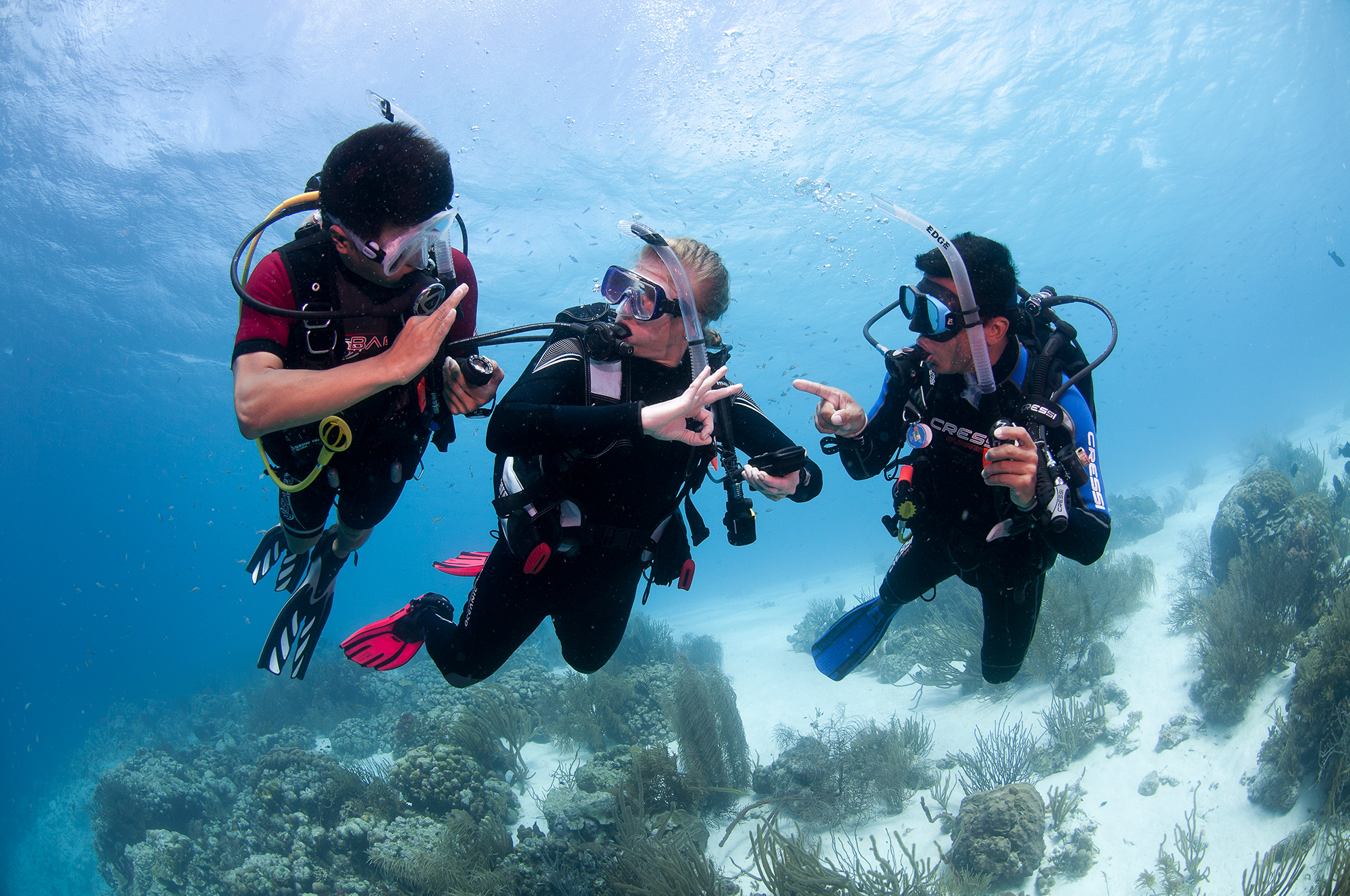
Open Water Dive 2:
Surface preparation for open water dive 2 is similar to dive 1. However, divers will now also have to plan the dive and establish correct buoyancy at the surface. The start of dive 2 looks like this:
- Use a dive computer or recreational dive planner (RDP) to plan the dive
- Put on your scuba equipment
- Perform a pre-dive safety check
- Adjust weight (if necessary)
- Orally inflate your BCD while at the surface
Once in the water, you will use the five-point method to descend to a maximum of 12 meters/40 feet again using a control line or the sloping bottom contour. Once at depth, you will need to make yourself neutrally buoyant using your low-pressure inflator. Then, it’s time to demonstrate the following dive 2-specific skills:
- Clear a fully flooded mask
- Recover and clear the regulator at depth
- Signal out of air and use an alternative air source with a buddy
- Ascend while using/donating an alternate air source
After completing these, you’ll spend any remaining time exploring the dive site, staying aware of your air consumption and your buddy’s location at all times, before using the five-point method to ascend to the surface while maintaining buddy contact and performing a safety stop along the way
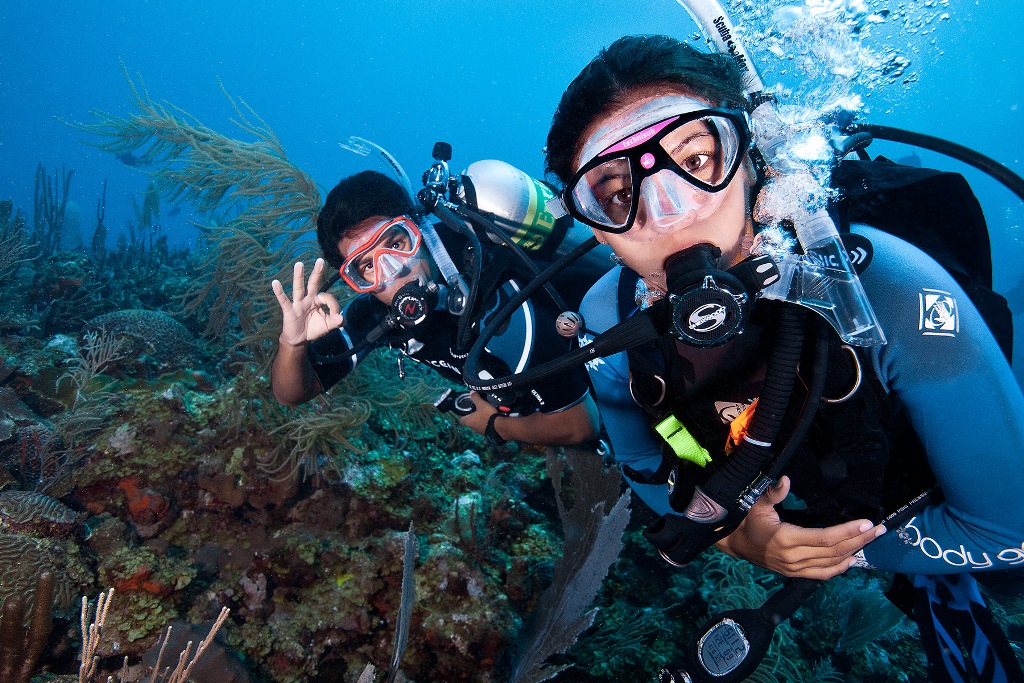
PADI Open Water Dives 3 and 4
An increase in the maximum depth and the addition of more surface and in-water skills make open water dives 3 and 4 the ideal progression to grow your in-water capabilities. The PADI Open Water dive 3 and 4 skills will complete the requirements to become certified as a PADI Open Water Diver.
It’s also likely that, during these dives, you will have more time to explore the underwater world. It’s the perfect way to further build your confidence and diving competency.
The maximum depth for open water dives 3 and 4 is 18 meters/60 feet.
Open Water Dive 3:
By dive 3, the dive preparation steps should look somewhat familiar:
- Use a dive computer or recreational dive planner (RDP) to plan the dive
- Put on your scuba equipment
- Perform a pre-dive safety check
- Adjust weight (if necessary)
After descending to a maximum of 18 meters/60 feet using the five-point method (with only visual references to assist the descent), your instructor will require you to perform these dive 3-specific skills:
- Inflate your BCD orally to become neutrally buoyant and hover
- Clear a fully flooded mask
Once complete, you will explore the dive site, staying aware of your air consumption and your buddy’s location, before using the five-point method to ascend while maintaining contact with your buddy, performing a safety stop on the way up.
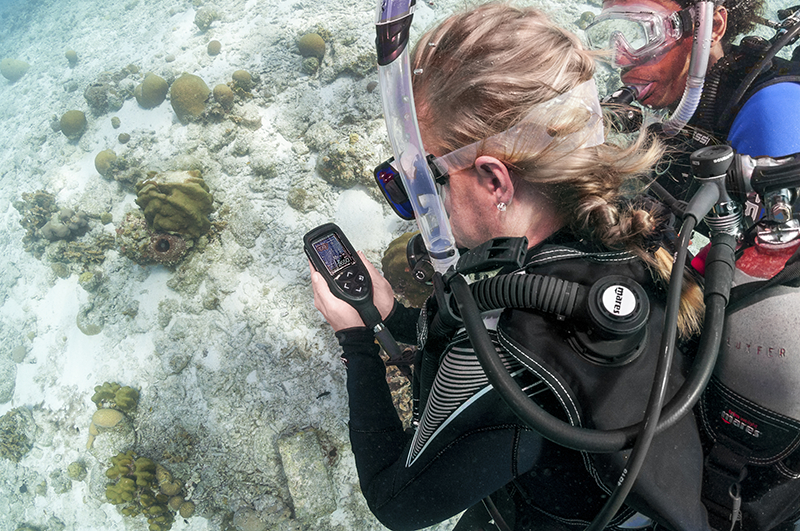
Open Water Dive 4:
PADI Open Water dive 4 skills are usually made up of any remaining dive-flexible skills that you have not performed during the other 3 open water dives. By now, dive preparation and the entry procedure should be comfortably familiar:
- Use a dive computer or recreational dive planner (RDP) to plan the dive using the PADI Skill Practice and Dive Planning Slate
- Put on your scuba equipment
- Perform a pre-dive safety check
- Adjust weight (if necessary)
Divers will then descend using the five-point method and without a reference this time. Once at depth, you don’t have any formal skills to practice, so you can concentrate on exploring the dive site while still under the watchful eye of your instructor. It’s the perfect chance to go from just practicing standalone skills, to putting them all together as you actually dive. At the end, you’ll use the five-point method to ascend to the surface while maintaining contact with your buddy.
And that’s it, congratulations!
If you’ve made it this far; you’ve completed the knowledge development and your four open water dives are done, pat yourself on the back! You will now have the underwater experience and have performed the required dive skills to become certified as a PADI Open Water Diver.
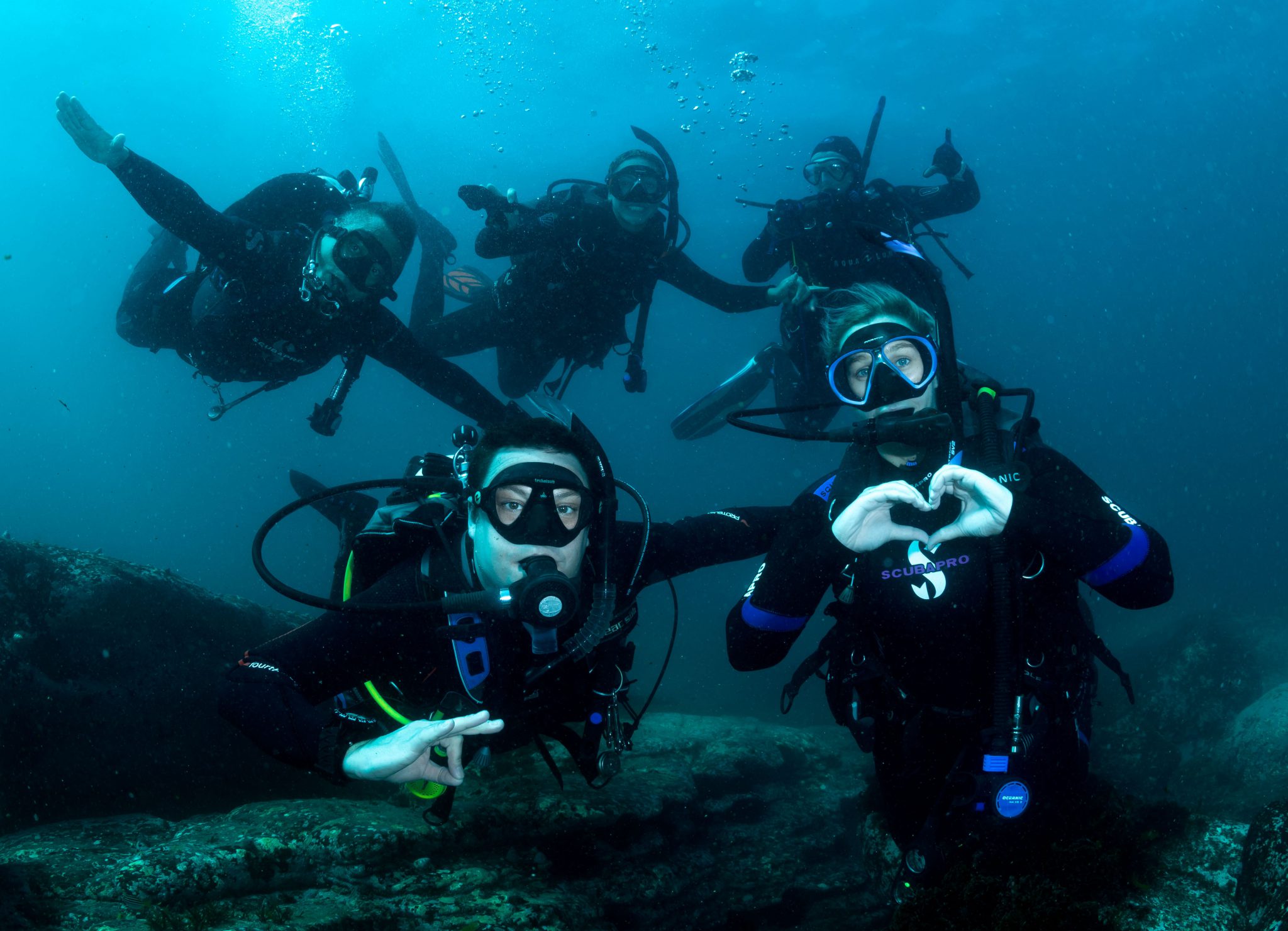
What Comes Next?
Now that you’re a certified diver, thousands of dive centers, dive resorts, and liveaboards around the world are waiting for you to visit them! The more you dive and practice all your new skills, the more comfortable you’ll be in the water, and the better diver you will become.
The next step in your training is the PADI Advanced Open Water Diver course. The course consists of two compulsory adventure dives to learn more advanced skills, such as underwater navigation and deep diving, plus three adventure dives of your choice. You can really choose your own adventure and learn about whatever type of diving you want to do next.
Diving is like riding a bike. You never forget, but if you’ve been out of the water for a while, you can get rusty. Your certification doesn’t expire, but we recommend that after a long dry spell, you sign up to do a ReActivate Scuba Refresher course to brush up on your basic skills and get your confidence back.
Have more questions? Check out our scuba certification FAQ page. Or, if you’re ready to jump in and learn to dive, sign up for your PADI Open Water Course today!
